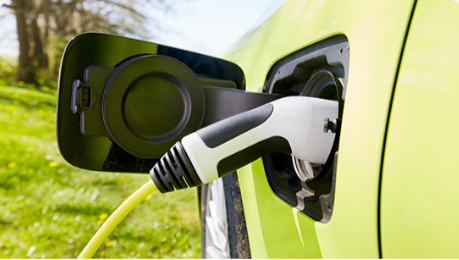How do seasons and temperatures affect range?
Range is a hot topic when it comes to electric cars. In this article we help you understand how seasons and temperatures can affect range.
Are you ready to go electric?
Want to know if an electric car is the right choice for you?
Join in with our simple online quiz to find out more.
How do seasons and temperature affect range?
Most of the time in the UK, our temperatures don’t make a lot of difference to range. We’ve found that on a Kia e-Niro the range drops about 20 miles in winter from 280 miles to 260 miles. And as things warm up in summer, it can actually increase by 12 miles to 292 miles!
Even if it won’t make a lot of difference to your day-to-day driving, it’s worth being aware of. Let’s take a look at the details…
How does temperature affect range?
Electric cars tend to be most efficient at about 21.5°C. If it’s a few degrees cooler you won’t notice much difference, so if you mostly drive in normal temperature ranges you’d be forgiven for not noticing. It’s only when things get wintery that you’ll notice a bit of a drop.
Why does cold weather affect range?
What do you do when you get in a car in cold weather? Most of us turn up the fans and dial up the heat – and that’s a big reason for that slight drop in range in winter.
That’s because electric cars are a bit different from petrol and diesel. When you’re burning fuel, you can use waste heat from the engine to warm up the cabin. In an electric car, though, you need to take a bit of power from the battery for the heater.
You might also think it’s something to do with battery chemistry. Aren’t lithium-ion batteries less efficient when they’re cold? Well yes, but that’s why car makers spend a lot of time creating complicated heat management systems for their batteries to keep them at an efficient temperature. And it’s these heating systems that use power.
So your range doesn’t creep down because your battery is cold – it’s because your car uses a bit of your charge to keep the battery warm.
There are a couple of other things to think about in the winter. You’ll lose range if you’re driving in strong winds, snow and rain. And do you live somewhere cold enough to run winter tyres? If so, they roll a bit less efficiently. But these aren’t exclusive to electric cars – they affect petrol and diesel too.

How does hot weather affect range?
In Britain, warm weather normally means you’ll get a bit more range. With batteries at their most efficient at 21.5°C, those balmy summer days help get the most from every charge.
What if you get stuck in extreme weather?
And if you get stuck in a traffic jam in the depths of winter or the height of summer, do you need to worry about running out of charge? Not according to Which?, who tested it out in their Volkswagen ID.4. After an hour and a quarter with air con, heated seats, music and headlights on (plus a tablet charging), they only lost 2% of the charge. That’s just 8 miles.
How can you get the maximum range in extreme weather?
There are a few simple tips to keep things as efficient as possible:
Heat yourself, not your cabin. If you’ve got heated seats and steering wheels, use them. They’ll draw about 75 watts while heating the cabin’s air can use over 40 times that! You can also choose a car with a heat pump system – an amazing gadget that makes heating your car much, much more efficient.
Use your car’s pre-conditioning. This electric-specific feature warms up or cools down your car and battery before you start travelling. You need to leave your car plugged in and enter the time into your car’s companion app – then it’ll use mains power to get things toasty warm (or frosty cool) before you start driving.
Plug in during extreme weather. If things are really freezing or scorching, a lot of car makers suggest leaving the car plugged in but not charging during really hot or cold weather. This means you can manage your battery temperature and so help it last longer.
And whatever the weather, you can improve your range and efficiency by driving smoothly and efficiently, being light on the accelerator and using your regenerative braking.
So while extreme temperatures can affect range, it’s not enough of a problem for most of us to worry about.
If you still want to know more about electric car range check out our ultimate guide to range.
This article contains links to other sites. ElectriX is not responsible for the contents of any of these websites.
Discover electric cars today
Discover electric cars that are available through our partner CBVC today.
Discover cars available















